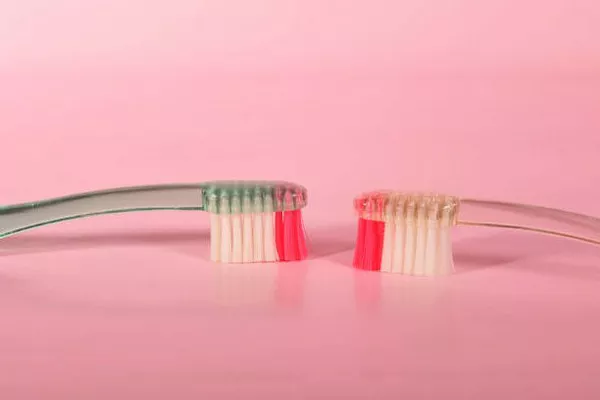Periodontal disease is a common dental condition affecting millions of people worldwide. It is a chronic inflammatory disease that affects the periodontium, the supporting tissues around the teeth, including the gums, ligaments, and bone. If left untreated, periodontal disease can lead to tooth loss and other systemic health problems, such as cardiovascular disease, diabetes, and respiratory diseases.
While periodontal disease is treatable, it is essential to understand that there is no definitive cure for the condition. However, with proper treatment and management, patients can maintain healthy teeth and gums and prevent the disease from progressing.
In this article, we will explore the current state of research on periodontal disease and examine the available treatments to manage the condition.
Understanding Periodontal Disease:
Periodontal disease is caused by bacterial plaque, a sticky film that forms on teeth and gums. When plaque is not removed through proper oral hygiene practices such as brushing and flossing, it can harden into tartar, also known as calculus. Tartar traps bacteria, leading to inflammation and infection in the gums.
The first stage of periodontal disease is gingivitis, which causes inflammation and bleeding of the gums. Gingivitis is reversible with proper oral hygiene and regular professional cleanings.
If left untreated, gingivitis can progress to periodontitis, a more severe form of periodontal disease. In periodontitis, the gums pull away from the teeth, forming pockets that become infected with bacteria. As the disease progresses, the pockets deepen, leading to bone loss and eventually tooth loss.
While anyone can develop periodontal disease, certain risk factors make some individuals more susceptible than others. These risk factors include smoking, genetics, poor nutrition, hormonal changes, and certain medications.
Treatments for Periodontal Disease:
While there is no definitive cure for periodontal disease, several treatments are available to manage the condition and prevent its progression.
Scaling and Root Planing:
The most common treatment for periodontal disease is scaling and root planing, also known as deep cleaning. Scaling involves removing plaque and tartar from the tooth surfaces and beneath the gum line. Root planing smooths rough spots on the tooth roots, making it more difficult for bacteria to stick to them.
Scaling and root planing may be performed using local anesthesia to ensure patient comfort. Depending on the severity of the disease, multiple appointments may be needed to complete the treatment.
Antibiotics:
In some cases, antibiotics may be prescribed to treat periodontal disease. Antibiotics can be taken orally or applied directly to the infected areas. They work by killing the bacteria causing the infection and reducing inflammation.
Antibiotics are typically used in conjunction with other treatments, such as scaling and root planing. The use of antibiotics is controversial, however, due to concerns about antibiotic resistance and adverse side effects.
Surgery:
In advanced cases of periodontal disease, surgery may be necessary to remove diseased tissue and regenerate lost bone. Surgery may involve procedures such as flap surgery, bone grafting, and guided tissue regeneration.
Flap surgery involves lifting the gums to remove tartar and bacteria from deep pockets and repositioning the gums to fit snugly around the teeth. Bone grafting involves adding synthetic or natural bone to replace lost bone and support the teeth. Guided tissue regeneration involves placing a membrane between the gum tissue and the bone to encourage new bone growth.
Prevention of Periodontal Disease:
While periodontal disease is treatable, prevention is the best approach to maintain healthy teeth and gums. The following practices can help prevent periodontal disease:
1.Brush teeth twice daily with fluoride toothpaste.
2.Floss daily to remove plaque between teeth and along the gum line.
3.Use antimicrobial mouthwash to kill bacteria in the mouth.
4.Eat a balanced diet rich in fruits, vegetables, and whole grains.
5.Avoid tobacco use.
6.Visit the dentist regularly for professional cleanings and check-ups.
Does periodontal disease ever go away?
Periodontal disease is a chronic condition, which means that it cannot be completely cured. However, with proper treatment and ongoing maintenance, the progression of the disease can be stopped or slowed down, and the symptoms can be managed effectively.
Treatment usually involves professional cleaning to remove plaque and tartar buildup from your teeth and gums, as well as other procedures such as scaling and root planing, gum surgery, or bone grafting in severe cases. Your dentist or periodontist may also prescribe antibiotics to help control the infection and reduce inflammation.
After treatment, it’s important to maintain good oral hygiene habits such as brushing twice a day, flossing daily, and using an antiseptic mouthwash regularly. You may also need to visit your dentist or periodontist more frequently for checkups and cleanings, depending on the severity of your condition.
So while periodontal disease cannot be fully cured, it can be effectively managed with proper treatment and ongoing care.
Conclusion:
Periodontal disease is a chronic inflammatory condition that affects millions of people worldwide. While there is no definitive cure for the disease, several treatments are available to manage the condition and prevent its progression.
Scaling and root planing, antibiotics, and surgery are among the common treatments used to manage periodontal disease. Prevention through proper oral hygiene, a healthy diet, and regular dental visits is essential to maintaining healthy teeth and gums.
Patients with periodontal disease should work closely with their dental professionals to develop an individualized treatment plan that meets their needs and goals. With proper care and management, patients can maintain healthy teeth and gums and improve their overall health and w
Related Topics:



























